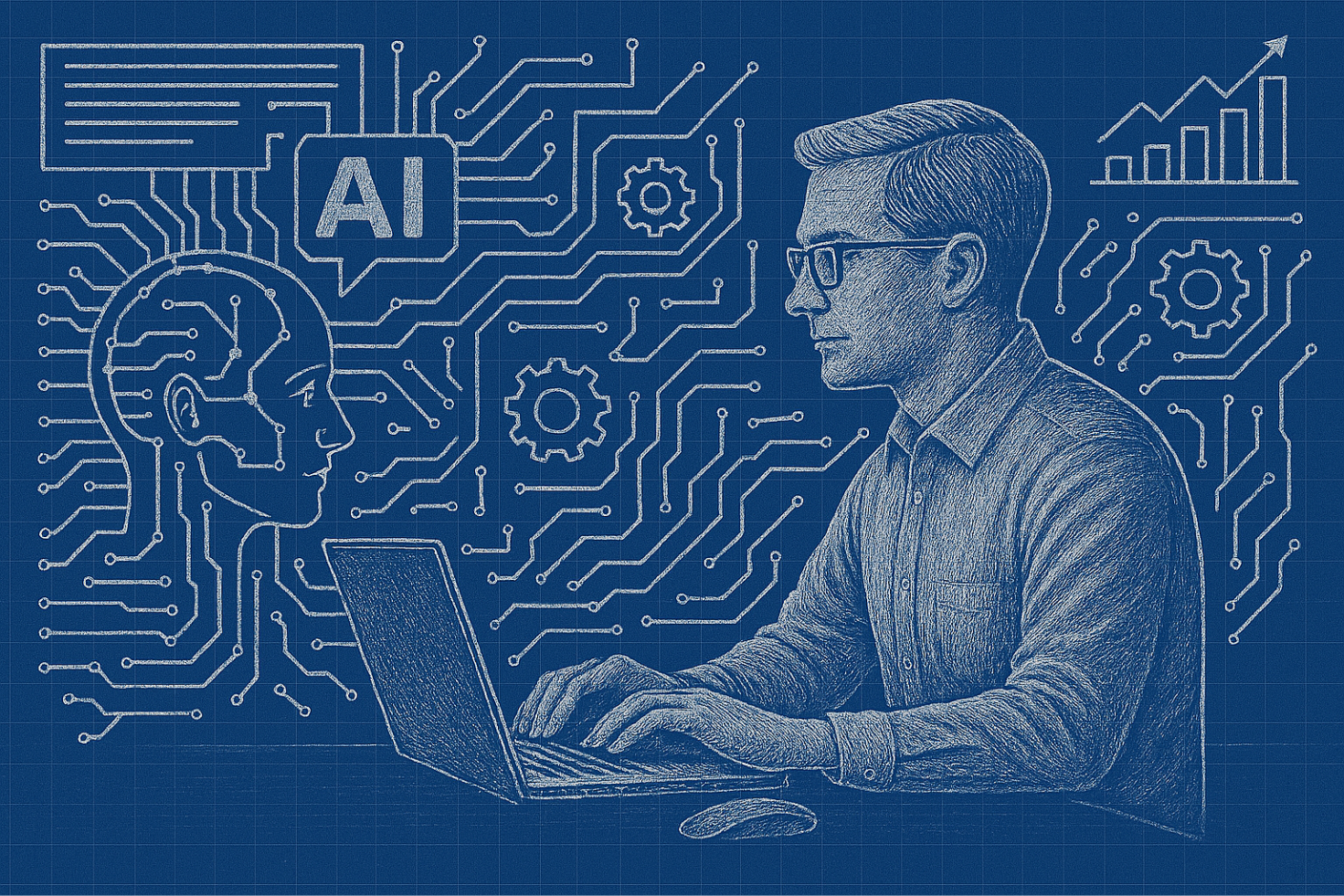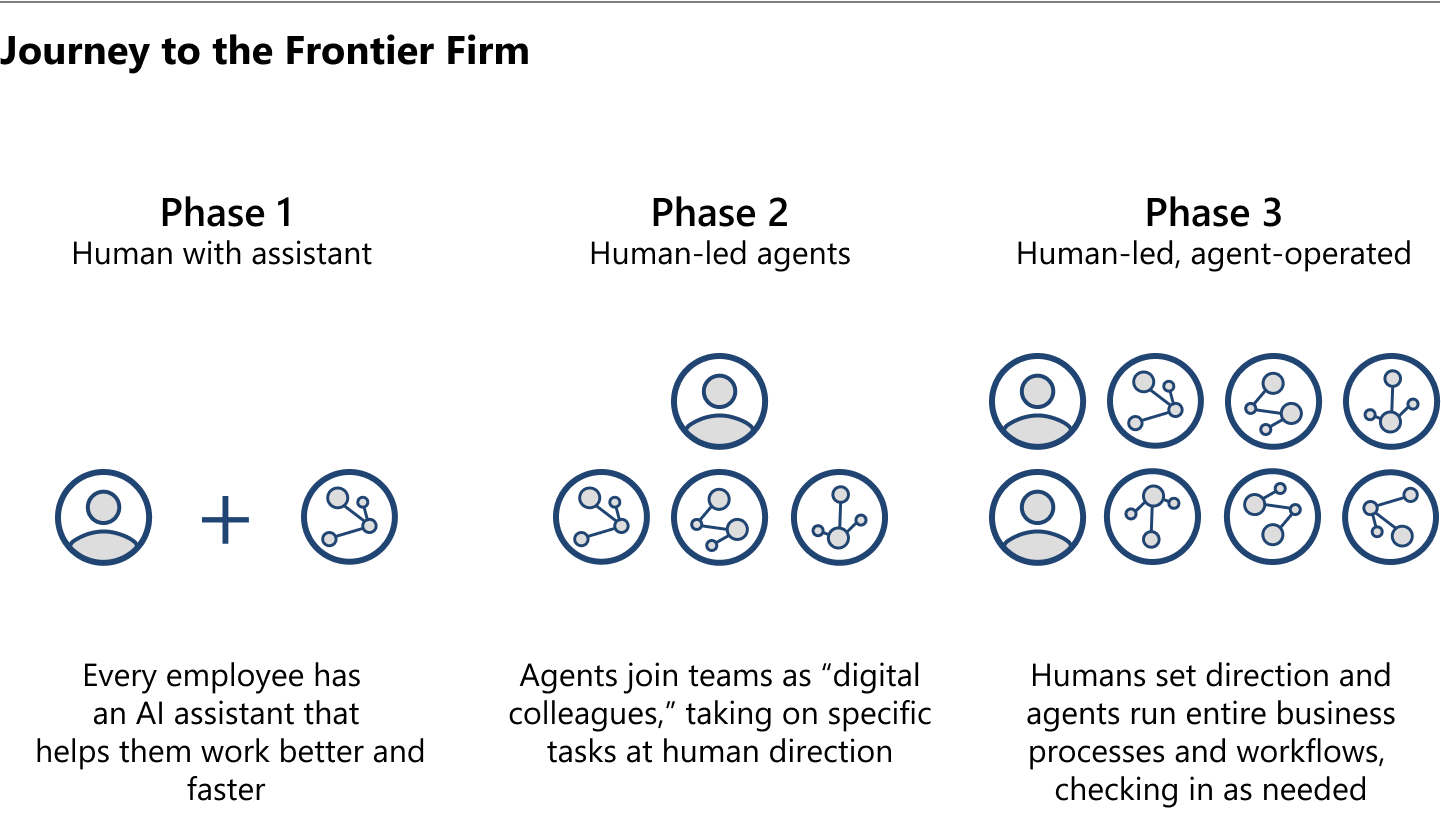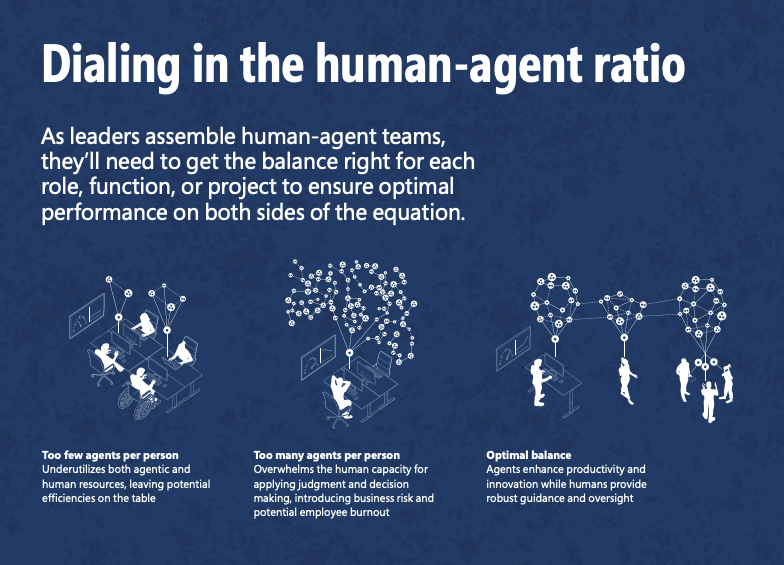
The phrase “Frontier Firm” is popping up more and more as artificial intelligence becomes a real part of how organisations work. But what does it actually mean to be a Frontier Firm, and why is this idea getting so much attention right now? As AI agents move from handling simple tasks to transforming entire workflows, the way we work is changing fast.
Microsoft’s 2025 Work Trend Index calls this “the year the Frontier Firm is born”, pointing to a shift where people and AI are working together in new ways. Becoming a Frontier Firm isn’t about rolling out a single tool or ticking a box, it’s about rethinking how your organisation operates, from the ground up. At Engage Squared, we’re seeing this shift first-hand as we help organisations across Australia, New Zealand, and Japan move from experimenting with AI to making agents a core part of their teams. a
So, what actually makes a Frontier Firm different? In this article, we’ll break down the “Five Pillars” that set these organisations apart, covering everything from having intelligence on tap, to building a culture where humans and AI work side by side, to reimagining talent and leadership for the agent-powered era. We’ll also look at practical steps for making the leap, and what it all means for the future of work. Let’s dive in!
Note: The ‘Frontier Firm’ is not related to the ‘Frontier Program’ offered by Microsoft
The Five Pillars of a Frontier Firm
According to the 2025 Work Trend Index, a Frontier Firm is one that progresses through three phases of change as it embraces artificial intelligence into its workforce and becomes a hybrid workplace between human and AI agent. We’ve broken it down further into the “Five Pillars of a Frontier Firm” to make it easier to identify one.
1. Intelligence on Tap
The organisation has the ability to purchase and deploy AI-powered digital labour on demand, scaling workforce capacity to meet business needs quickly and efficiently. This allows mundane, repetitive tasks to be handled by AI whenever needed, so that the human workforce can focus on more important tasks and human-specific reasoning that AI can’t replicate. This is backed by statistics too, with 82% of leaders say they’d use AI to expand their workforce capacity in the next 12-18 months.
2. A Closing Capacity Gap
Organisations satisfying the previous pillar will have AI agents available 24/7, closing the capacity gap between business demands and human capability. This helps to solve a growing and significant gap in the workforce, as 53% of leaders say productivity needs to increase yet 80% of the global workforce indicate that they don’t have the time or energy (or both) to complete their work to a satisfactory level of productivity.
3. Culture of Human-AI Collaboration
Frontier Firms will foster a culture where humans and AI work together and collaborate together effortlessly. Rather than replacing human creativity, AI will complement it by helping teams brainstorm, iterate, and execute ideas faster. This co-creation model empowers employees to complete work that is human-specific and is less tedious. The result? A more agile, innovative, and empowered workforce that thrives on collaboration between human and machine.
4. Widespread Agent Leadership
In a Frontier Firm, every human employee becomes an agent boss. Someone who builds, delegates to, and manages AI agents to help with their work and improve productivity. This shift empowers workers to take control of their careers, acting like CEOs of their own agent-powered startups. Leaders expect that within five years, 41% of employees will be training agents, and 36% will be managing them.
5. A new talent economy
This new era of AI agents & employees is rewriting the rules of talent and competition in the workplace. The world’s top startups are hiring at twice the rate of other companies, and lots of that talent is coming from traditional workplaces. A new wave is coming – and it’s tidal.
Frontier Firms are doing more than adapting, they’re actually rebuilding around AI! From having intelligence on tap to employing a team of agent bosses, Frontier Firms really are new. In fact, 78% of leaders are considering hiring for new AI roles, and 83% say that AI will enable employees to take on more complex work earlier in their careers, showing the need for a more AI-oriented workforce with the skills needed to manage agents and use artificial intelligence effectively.

What a journey to becoming a Frontier Firm looks like
Preparing to become a Frontier Firm
Now that we understand the pillars of a Frontier Firm, the next step is to explore how organisations can become one. The transformation from a regular firm into a Frontier one isn’t linear, it’s entirely systemic, changing the way we work from the ground-up and integrating new, fresh workflows tightly integrated between human and machine.
1. Rethink the organisational structure
Frontier Firms will break down traditional silos, moving away from rigid org charts toward dynamic “work charts”, similar to that of a film production team. These new “work charts” are fluid, project-based, and talent-driven. Leaders can begin by piloting cross-functional teams supported by AI agents, enabling agile collaboration and faster execution.
2. Optimise the human-agent ratio
Without the right balance, working between human and agent can become convoluted and confusing. It’ll be hard to manage a team of Agents if there’s too many or too little. This is where the human-agent ratio comes in. Organisations must find the right balance between human and agent contributions. This means assessing which tasks are best suited for automation and which require human creativity. Leaders should consider creating hybrid roles or departments, such as a Chief Resources Officer or Intelligence Resources team. This will allow for oversight across the organisation both of resources and the ratio as a whole.
3. Invest in agent fluency (In other words, upskill!)
To truly become a Frontier Firm, organisations must go beyond simply adopting AI. They must build agent fluency across their workforce. This means equipping employees not just to use AI tools, but to build, delegate to, and manage agents as part of their daily workflows.
Strategic leaders should prioritise tailored training programs that empower employees to become “agent bosses.” These programs should cover:
- Understanding agent capabilities: What agents can do, and where they add the most value.
- Delegation strategies: How to break down tasks and assign them to agents effectively.
- Agent management: Monitoring performance, refining prompts, and iterating workflows.
4. Build a culture of co-creation
AI should complement (not replace!) human skills such as creativity, empathy, and ingenuity. Leaders can foster a culture of human-AI collaboration by encouraging experimentation, rewarding innovation, and integrating agents into brainstorming and execution processes. This co-creation model helps teams move faster and think bigger.
5. Reconsider talent aquisitions
As AI reshapes the talent landscape, organisations must adapt their hiring and development strategies. This includes recruiting for AI fluency, creating new roles focused on agent management, and offering career pathways that reflect the increasing complexity and strategic nature of work enabled by AI.

Optimising human to agent-ratio: Source Microsoft Work Trend Index 2025
Ready to take your next step toward the future of work?
If your organisation is ready to take the next step toward the future of work, we’re here to help. Our team offers hands-on workshops, tailored training programs, and advisory services to help you explore, plan, and confidently adopt AI tools.
To dive deeper, check out our articles on AI and the future of work, or get in touch to see how we can support your journey.
About the author
Hamish Ferguson is a consultant at Engage Squared in the Transformation & Change practice. Studying media and graphic design, he’s always searching for ways to scratch that creative “itch” through his photography. Either that, or he’s watching cars go in squiggly circles (Formula One.)


